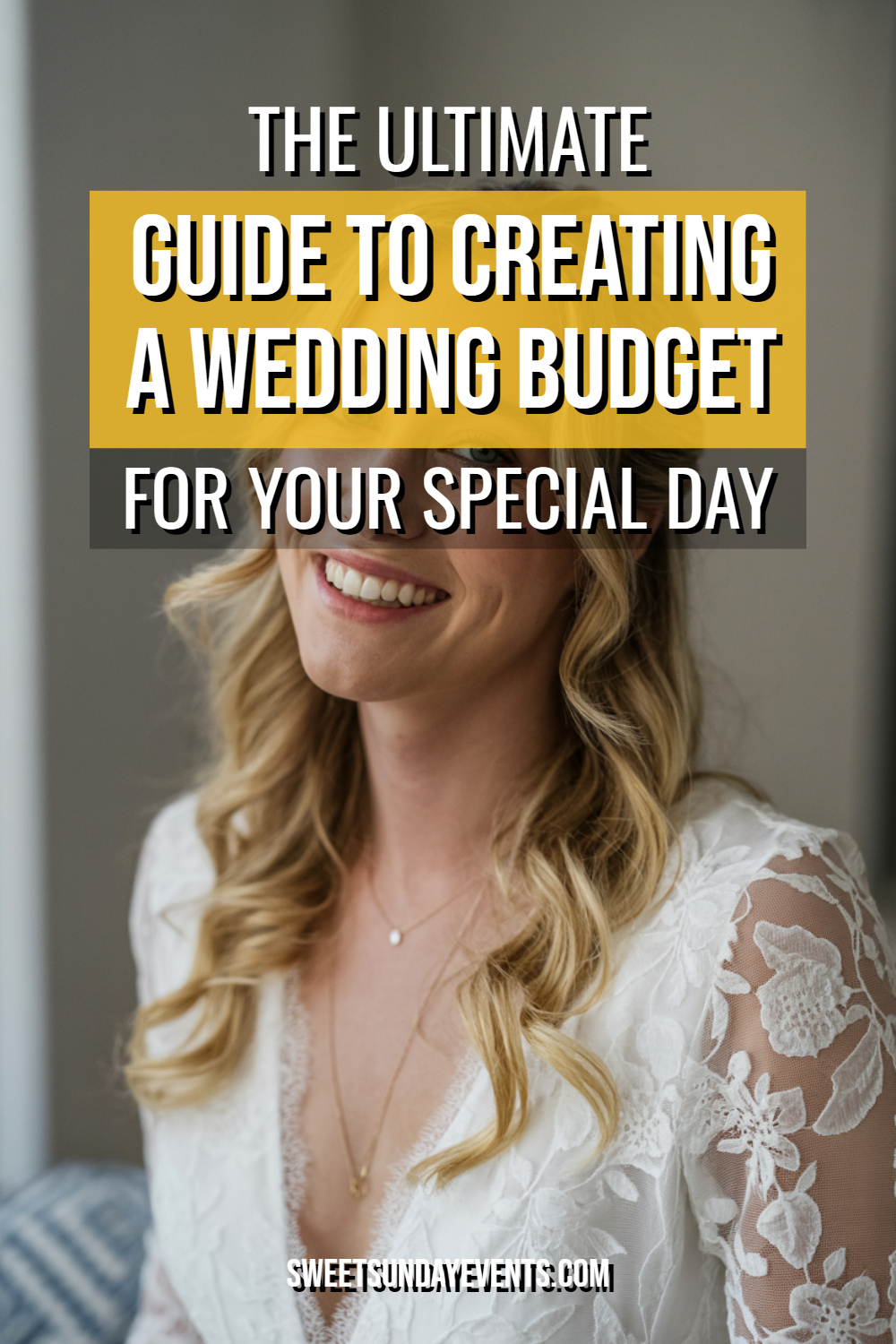Planning a wedding without a budget is like driving blindfolded—you might get somewhere, but it probably won’t be where you wanted to go.
After watching countless couples stress-eat cake samples while their credit cards smolder in the background, I’ve learned that a solid budget isn’t just helpful, it’s essential for keeping your sanity intact.
Setting Your Financial Foundation
Before you fall down the Pinterest rabbit hole of mason jar centerpieces, you need to face the music about money. This conversation isn’t glamorous, but it’s the difference between starting married life with a celebration versus a mountain of debt.
Start by having an honest conversation with everyone who might contribute financially. Parents, grandparents, that generous aunt who always promised to help—get specific numbers, not vague promises.
“We’ll help out” doesn’t translate to a dollar amount you can work with.
Once you know what others are contributing, determine what you and your partner can realistically afford to spend from your own savings. Look at your actual bank account, not the fantasy version where you somehow save twice as much as usual over the next year.
What’s the True Wedding Costs?
Most couples dramatically underestimate wedding expenses because they focus on the big-ticket items while ignoring the death-by-a-thousand-cuts smaller costs.
That beautiful venue quote doesn’t include gratuities, overtime fees, or the tax that magically appears on your final bill.
Wedding vendors are notorious for presenting base prices that multiply faster than rabbits once you add necessities.
Your photographer’s package might seem reasonable until you realize it doesn’t include a second shooter, engagement photos, or digital copies of your images.
Research shows the average wedding costs significantly more than most couples initially budget. Factor in a 10-20% buffer for unexpected expenses, because something will always cost more than anticipated.
Prioritizing Your Spending
Every couple has different non-negotiables, and identifying yours early prevents you from accidentally blowing your budget on things that don’t matter to you.
Some couples would rather serve pizza than compromise on their dream photographer, while others need that perfect dress more than upgraded florals.
Sit down together and separately list your top five wedding priorities. Compare lists and discuss any major differences. This exercise reveals what you each truly care about and where you’re willing to compromise.
The Big Four Budget Categories
Most wedding budgets break down into four major categories that typically consume 70-80% of your total spending. Understanding these proportions helps you allocate funds more strategically.
Venue and Catering usually eat up 40-50% of your budget. This includes the ceremony site, reception venue, food, drinks, service charges, and gratuities. Don’t forget to factor in rental fees for additional items like linens, chairs, or sound equipment.
Photography and Videography typically accounts for 10-15% of your budget. Quality wedding photographers are expensive for good reason—they’re capturing memories you can’t recreate.
Videography adds another layer of cost but provides moving memories that photographs can’t capture.
Attire and Beauty generally runs 8-10% of your total budget. This covers wedding dress, alterations, shoes, accessories, groom’s attire, hair, makeup, and any pre-wedding beauty treatments. Alterations alone can cost several hundred dollars, so budget accordingly.
Flowers and Décor usually consume 8-10% of your budget. Fresh flowers are expensive and perishable, making this category ripe for creative cost-cutting. Consider which floral elements matter most and where you can use alternatives.
Smart Budgeting Strategies
Creating a realistic wedding budget requires more than just dividing your total amount by the number of vendors you need. Smart couples use specific strategies to maximize their spending power without sacrificing their vision.
Track every expense in a detailed spreadsheet that includes estimated costs, actual quotes, deposits paid, and final amounts. Update this regularly as you book vendors and make decisions. Many couples are shocked by how quickly small expenses add up.
Timing Your Expenses
Wedding expenses don’t hit your bank account all at once, giving you time to spread costs over several months. Create a payment timeline that shows when deposits are due, when final payments are required, and when you’ll need cash for day-of expenses.
Book your most expensive vendors first while you have the most budget flexibility. Venues and photographers often require deposits 6-12 months in advance, giving you time to save for final payments.
Keep a separate wedding savings account to avoid accidentally spending your wedding funds on everyday expenses. Set up automatic transfers to build this fund consistently rather than hoping you’ll remember to save each month.
Finding Hidden Savings
Wedding vendors often have flexibility in their pricing, especially during off-peak seasons or for weekday events. Friday and Sunday weddings can cost 20-30% less than Saturday celebrations, and winter weddings often come with significant discounts.
Consider which services you actually need versus what vendors are trying to sell you. That upgraded linen package might look lovely in photos, but your guests won’t remember whether you had polyester or silk napkins.
DIY projects can save money, but honestly assess your skills and available time. A simple centerpiece project might be manageable, but attempting to make your own wedding cake often ends in tears and emergency bakery visits.
Managing Budget Overruns
Even the most carefully planned budgets experience overruns, usually because couples fall in love with upgrades or discover unexpected costs. Having a plan for managing these situations prevents panic and poor financial decisions.
Build flexibility into your budget by keeping 10-15% of your total funds in reserve for unexpected expenses or irresistible upgrades. This cushion lets you say yes to things that truly matter without derailing your entire financial plan.
When to Splurge and When to Save
Certain wedding elements are worth splurging on because they significantly impact your experience or create lasting memories. Great photography, delicious food, and comfortable venues enhance your celebration in ways that cheap alternatives cannot match.
Other elements offer opportunities for savings without major impact on your day. Expensive linens, elaborate centerpieces, and premium bar packages often matter more to vendors than to guests.
Transportation, wedding favors, and elaborate welcome bags are common areas where couples overspend on items that guests barely notice. Redirect these funds toward elements that create better experiences for everyone.
Working with Vendors on Budget
Many couples feel intimidated discussing money with wedding vendors, but professionals expect these conversations and often have solutions for different budget levels.
Being upfront about your budget constraints often leads to creative alternatives rather than automatic rejection.
Ask vendors what they can do within your budget rather than asking for discounts on their standard packages. This positions the conversation as collaborative problem-solving rather than price negotiation.
Getting the Most Value
Compare quotes carefully, ensuring you’re evaluating similar services and inclusions. The cheapest option isn’t always the best value if it requires significant additional expenses to meet your needs.
Read contracts thoroughly and understand what triggers additional charges. Overtime fees, travel costs, and equipment rentals can add hundreds or thousands to your final bill if you’re not prepared.
Book vendors who offer multiple services when it makes sense. A photographer who also provides videography or a venue that includes catering might offer package deals that save money overall.
Tracking and Adjusting Your Budget
Your wedding budget is a living document that needs regular updates as you make decisions and receive quotes. Set aside time monthly to review your spending, update projections, and make adjustments as needed.
Use apps or spreadsheets that calculate running totals automatically, so you always know where you stand financially. Seeing your remaining budget decrease in real-time helps prevent overspending in later categories.
Making Tough Decisions
Sometimes you’ll need to cut expenses to stay within budget, and these decisions are never easy. Focus on your original priorities list and be willing to sacrifice elements that matter less to you personally.
Consider postponing rather than eliminating certain elements. You might skip videography now and hire someone to create a short film from guest photos and footage after the wedding.
Talk through difficult budget decisions together rather than letting one person make all the cuts. Resentment builds quickly when someone feels their priorities are consistently sacrificed for budget reasons.
Final Thoughts on Wedding Budget Success
Creating and sticking to a wedding budget requires discipline, flexibility, and honest communication with your partner. The couples who succeed are those who stay focused on their priorities while remaining realistic about their financial limitations.
Your wedding budget is ultimately about creating a celebration that reflects your values and starts your marriage on solid financial ground. The most beautiful wedding in the world isn’t worth beginning married life buried in debt or family conflict over money.
Keep perspective throughout the planning process—your wedding is one day, but your marriage is hopefully forever. Make financial decisions that support both your celebration and your future together.


